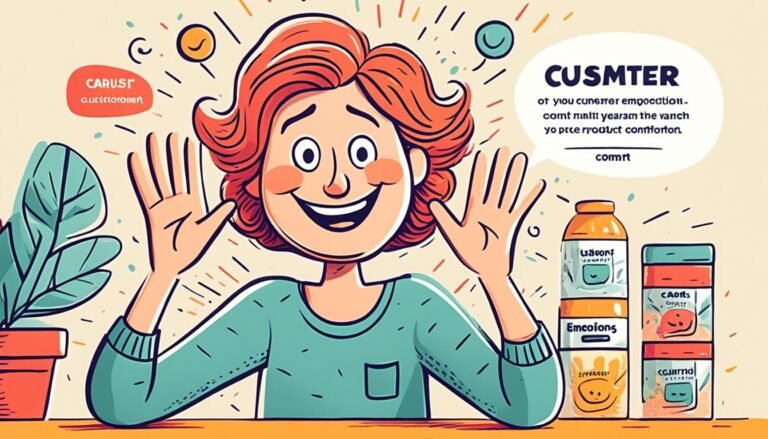Traditional Marketing Approaches Reimagined: Strategies That Stand the Test of Time
Getting the Hang of Marketing Strategies
Marketing can be split into two main camps: old-school and digital. Each has its own quirks, perks, and headaches that marketers need to get a grip on to hit their audience right where it counts.
Old-School vs. Digital Marketing
Old-school marketing is all about those classic, offline tactics. Think TV and radio ads, print ads, billboards, and good ol’ direct mail. These methods aim to grab eyeballs through various offline channels. Even though they’ve been around the block, they still pack a punch alongside the newer, shinier strategies (HiveMind Inc).
Digital marketing, on the flip side, uses the internet to connect with folks. This includes social media, email blasts, and search engine tricks, letting businesses zero in on specific groups more effectively. It’s usually cheaper than old-school methods and lets you target folks who are actually interested.
| Marketing Style | What It Is | Cost | Who It Hits |
|---|---|---|---|
| Old-School Marketing | Offline stuff (TV, print ads) | More expensive | General public |
| Digital Marketing | Online stuff (social media) | Cheaper | Specific groups |
Costs and Channels
Old-school marketing usually costs more. TV ads, print ads, and billboards can burn a hole in your pocket. For example, making and airing a TV commercial isn’t cheap, and print ads in magazines or newspapers also cost a pretty penny.
Digital marketing, though, offers cheaper options, letting businesses stretch their dollars further. Social media posts or email campaigns cost way less than traditional ads. Plus, digital marketing lets you track how things are going and tweak your campaigns on the fly to get the best bang for your buck.
| Channel | Old-School Cost | Digital Cost |
|---|---|---|
| TV Ad | High | N/A |
| Print Ad | Medium to High | N/A |
| Social Media Ad | N/A | Low |
| Email Campaign | N/A | Low |
Knowing the differences between old-school and digital marketing helps marketers make smart choices. By understanding the pros and cons of each, they can blend old-school tactics into their overall game plan. For more tips, check out our articles on digital marketing strategies, social media marketing tips, and email marketing tricks.
Why Traditional Marketing Still Matters
Traditional marketing isn’t just hanging on; it’s thriving. It works hand-in-hand with digital strategies and brings some unique perks to the table.
Old School Meets New School
Think direct mailers, print ads, billboards, and TV or radio spots. These methods still pack a punch when it comes to reaching a wide range of people. They can even drive folks to your online platforms, making it easier to gather data and track results (HiveMind Inc).
Some businesses lean heavily on traditional marketing, proving that a mix of old and new can be the sweet spot. The trick is to find the right balance for your products and audience.
Here’s a quick rundown of why traditional marketing rocks alongside digital:
| Benefit | Why It Matters |
|---|---|
| Wide Reach | You can catch people at home, on the go, or during their daily grind, boosting your visibility. |
| Multi-Channel Presence | Being everywhere means more chances to turn leads into sales. |
| Staying Power | Traditional ads can keep working without constant updates, making them a long-term win. |
Building Trust and Credibility
Traditional marketing helps build trust. Using well-known media channels makes your business feel familiar and reliable. This is gold for local businesses looking to connect with their community.
Plus, physical marketing materials can make your brand stick in people’s minds. A flyer or a billboard can create a lasting impression that digital ads might miss.
So, traditional marketing is all about adding value to your digital efforts while building trust and relationships with a wide audience. Want to dive deeper? Check out our articles on marketing approaches, digital marketing approaches, and social media marketing approaches.
Measuring Traditional Marketing
Figuring out if your old-school marketing is hitting the mark is a must for anyone looking to get the most bang for their buck. This part is all about keeping tabs on how your campaigns are doing and the best ways to measure them.
Tracking Campaign Performance
Keeping an eye on how your traditional marketing campaigns are doing is key to knowing if your offline ads are working. Here are some ways to gather the info you need:
| Tracking Method | What’s It About? |
|---|---|
| Asking Customers | Just ask new customers how they found you when they first show up. |
| Brand Surveys | Run surveys to see how well people know your brand and how far your campaign has reached. |
| Coupon Codes | Use special codes to see where your sales are coming from. |
| Unique Phone Numbers | Give each campaign its own phone number to track how many calls it gets. |
| Unique Email Addresses | Set up different email addresses for each marketing effort to see where inquiries are coming from. |
Using these methods helps you figure out which traditional marketing tactics are hitting home and where you might need to tweak things. For more on different marketing approaches, check out our full guide.
Effective Strategies for Measurement
To really see how well your traditional marketing is doing, you can use some tech tricks and get your customers involved:
| Measurement Strategy | What’s It About? |
|---|---|
| QR Codes | Stick QR codes on print materials to send folks to landing pages and track their engagement. |
| Landing Page URLs | Make unique URLs for each campaign to see how much traffic and conversions they get. |
| Redirect Domains | Use redirect domains to track where your visitors are coming from. |
| Social Media Mentions | Keep an eye on social media for any mentions related to your traditional marketing. |
| Discount Coupons | Hand out discount coupons through old-school channels. This not only attracts new customers but also lets you track how many coupons get used across different mediums like local papers and TV ads (Marcel Digital). |
These strategies help you measure your return on investment (ROI) in traditional marketing and fine-tune your methods for better results. For more on different digital marketing tactics, dive into our section on digital marketing approaches.
Evolving Traditional Marketing
As marketing keeps changing, old-school methods need a makeover to stay in the game. Let’s see how traditional marketing is stepping up with tech and blending with digital platforms.
Rolling with Tech Changes
Think newspaper ads, billboards, and TV commercials. These have been the go-to for ages, but with digital tech booming, they need a twist. Businesses are now using these old-school tools to push folks towards their online spaces, making it easier to track and understand customer moves. This mix not only makes tracking a breeze but also gives a fuller picture of what customers are up to.
| Old-School Marketing | New Twist |
|---|---|
| Newspaper Ads | Pointing to websites for more info |
| Billboards | QR codes leading to online deals |
| TV Commercials | Hashtags to spark online chats |
Traditional marketing keeps businesses in the spotlight, whether folks are at home, out and about, or just doing their thing. This multi-angle approach ups the chances of turning interest into sales (Mailchimp).
Blending with Digital Platforms
Mixing old-school and digital marketing has its perks. As people lean more towards digital, combining these methods can help businesses reach more folks. For example, a TV ad can nudge viewers to check out a brand’s social media or website, making the shift from traditional to digital smooth. This combo lets businesses play to the strengths of both worlds.
| Blend Method | Perk |
|---|---|
| Cross-Promotion | Boosts brand presence everywhere |
| Unified Messaging | Keeps branding and messages on point |
| Data Collection | Merges insights from both old and new campaigns |
With more people glued to their screens than ever, blending traditional and digital marketing is a no-brainer. Using both approaches helps businesses connect better with their audience and keep up with what folks want.
In short, giving traditional marketing a tech upgrade and mixing it with digital strategies can make a world of difference. For more tips on marketing, check out our articles on marketing approaches, social media marketing, and email marketing.
Which Works Better? Traditional vs. Digital Marketing
When it comes to marketing, figuring out if old-school methods or new-age digital tactics work better is key. Let’s break it down by looking at ROI and how each method targets and communicates with people.
ROI and Results
ROI, or return on investment, tells you how much bang you’re getting for your buck. Traditional marketing, like TV ads, can bring in big returns. We’re talking about 300-500% ROI, which is pretty sweet if you’ve got the cash to spend.
But here’s the catch: traditional marketing doesn’t give you instant feedback. You can’t tweak your strategy on the fly. Digital marketing, on the other hand, lets you see results in real-time. You can change things up as you go, making it super flexible.
Check out this table for a quick comparison:
| Marketing Method | Average ROI (%) |
|---|---|
| TV Advertising | 300 – 500 |
| Print Advertising | 100 – 200 |
| Digital Marketing | 400 – 800 |
Targeting and Communication
Traditional marketing is like casting a wide net. You aim for broad groups based on age or location. It’s not very personal. Digital marketing, though, is like using a laser pointer. You can target people based on what they like, what they do online, and even what they buy.
Plus, digital marketing lets you chat with your audience. They can comment, share, and like your stuff, giving you a better idea of what they want. This back-and-forth helps build a stronger connection with your customers.
But don’t count traditional marketing out just yet. It can still drive people to your digital platforms. Combining both can give you the best of both worlds, letting you gather more data and track how well your campaigns are doing.
Want to dive deeper? Check out our sections on digital marketing approaches and email marketing approaches.
Overcoming Challenges
Even though traditional marketing has its perks, it’s not all sunshine and rainbows. Marketers often hit a couple of big roadblocks: the hefty price tag and the need for specific skills to pull it off right.
Cost Considerations
Traditional marketing can burn a hole in your pocket, especially if you’re running a small or medium-sized business. Think about it: TV, radio, and print ads can rack up costs faster than you can say “ROI.” For instance, putting together and spreading around brochures, flyers, or newspaper ads can eat up a big chunk of your budget. And if you need to tweak your campaign, brace yourself—costs can skyrocket, making traditional marketing less flexible than its digital counterpart.
| Type of Traditional Marketing | Estimated Costs |
|---|---|
| TV Advertising | $5,000 – $500,000 per spot |
| Radio Advertising | $200 – $5,000 per spot |
| Print Advertising | $1,000 – $20,000 depending on circulation |
| Direct Mail | $0.50 – $3.00 per piece |
These expenses can scare off businesses from diving into traditional marketing. Sure, these methods can reach a lot of people, but they often miss the mark when it comes to targeting specific groups. Digital marketing, on the other hand, can zero in on niche markets and smaller customer bases.
Skills Gap and Expertise Needed
Nailing traditional marketing isn’t a walk in the park. It takes a certain set of skills and know-how. Many marketers might not have the chops to run traditional campaigns smoothly because these strategies involve juggling different media formats like print, broadcast, and direct mail. If you’re not a pro, managing all these channels can turn into a hot mess, leading to wasted time and money.
Plus, the marketing game is always changing. To stay on top, you’ve got to keep learning the latest tricks and trends in traditional marketing. This means investing time and resources, which can be tough for some businesses to swing.
On the flip side, digital marketing often comes with more accessible learning resources and training options. For businesses looking to close the skills gap, putting money into professional development and training programs can boost their team’s skills, making them better at using both traditional and digital marketing strategies.
By tackling these challenges head-on, marketers can make sure their traditional marketing strategies stay sharp and effective, even as the world keeps changing.






